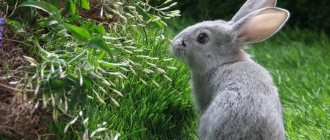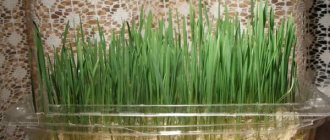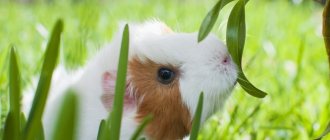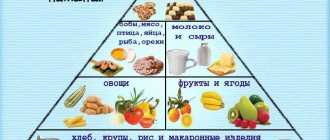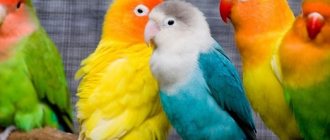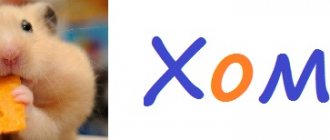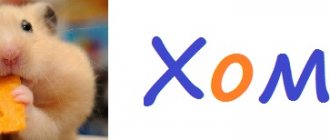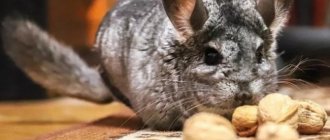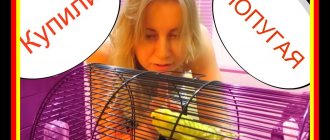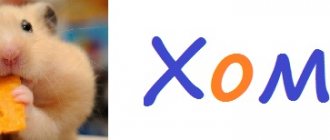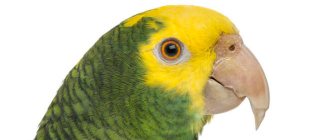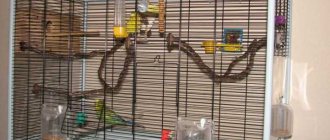The diet of a budgerigar, like any other animal, must be balanced. To properly create a menu for these birds, you need to include in it a maximum of natural sources of vitamins and microelements. Let's find out what grass budgies love, which will only benefit the body, and which can cause harm.
Do you need greens in the wavy's diet?
Wild parrots lead an active lifestyle, so most of the time they search for food. They eat not only seeds, but also plants and fruits. These products are not high in calories, but are rich in beneficial microelements.
In the wild, it is almost impossible to encounter an overweight individual, since such birds will not be able to escape from predators.
Domestic wavy cats lead a sedentary lifestyle. They do not search for food, and also fly little around the apartment or house. Their diet is formed only through the efforts of the owner.
Often people prefer to give the wavy exclusively grains and store-bought food. This leads to excess weight, deterioration of immunity and even vitamin deficiency. To prevent negative consequences for your bird's health, it is recommended to regularly include grass feed in its diet.
Does your parrot like grass?
Not really
Wild cereals
So, all wild meadow grasses are edible for parrots! Remember and don't pass by them! Give them fresh now, and dry and freeze them for the winter!
Wild grains are a valuable nutritious product containing protein, carbohydrates, fats and dietary fiber, as well as vitamins and microelements. Watching my parrots, I noticed that when there is a sufficient supply of wild grains on the menu, they completely refuse the rest of the food and devote themselves entirely to eating wild grains. This is especially true for Australian parrot species. Let's try to list them, shall we? I can’t do this alone, so, friends, I’ll start, and you continue! I will be very grateful to you!
In the photo: 1. Barnyard grass 2. Ryegrass 3. Chaff Ryegrass and chaff have many varieties and are very similar to each other.
4. Meadow bluegrass 5. Wild oats (empty oats) 6. Rump 7. Timothy 8. Orchard grass 9. Wheatgrass 10. My first “picture-plate”, with which I once began to climb the meadows in search of useful herbs for my parrots.))
What kind of greens can you give?
There are many varieties of herbs that can be included in your bird's diet. Each herb has its own characteristics and beneficial microelements. They can be found in any lawn, and you can also grow certain plants specifically.
Permitted and useful herbs are:
Clover. Its leaves contain carotene, oils and fiber. With the help of such food, the full development of the bird is ensured, and inflammation is also prevented. Clover is a natural antiseptic, and you can use not only meadow clover, but also creeping clover.- Plantain . It helps normalize digestion and also has an anti-inflammatory effect.
- Woodlouse. It has a positive effect on the condition of the skin and also improves the performance of the circulatory system.
- Dandelion . It is advisable to give the birds young shoots, which have a positive effect on the development of young parrots.
- Coltsfoot . It is considered an ideal choice for wavy fish as it contains many vitamins and minerals. Such greens have a positive effect on the respiratory, cardiac and nervous systems of the bird.
- Wheat sprouts. They help prevent anemia or food poisoning. Protects against parasites and skin diseases.
- Ezhovnik . This herb is also called chicken millet. It is an excellent source of iron, potassium, phosphorus and vitamin B.
- Nettle . It contains many useful vitamins, but before giving it to the wavy, it is necessary to scald the grass, and it is also advisable to give it in dried form.
- Beet tops . It is represented by a sweet and healthy herb that wavy birds love.
- Chicory herb . It has a positive effect on the nervous and cardiovascular system of the wavy, as it contains a large amount of potassium. Additionally, this green contains sulfur, vitamin A, fructose, inulin and calcium.
- Leaf salad . It is considered an ideal treat for birds and also has a positive effect on the immune system.
- Carrot tops . It contains keratin and many other vitamins that contribute to the effective development of poultry.
- Wood shoots . It is advisable to choose young leaves so that the bird can tear them easily. Leaves of birch, linden, chestnut, apple, pear or plum are selected.
- Barley . It contains potassium and silicon, which are necessary for every bird. Regular use of this herb has a positive effect on the condition of the skin and plumage.
- Spinach . It is considered a beneficial herb as it contains vitamins A and C, as well as calcium, potassium and iron, but it should be given to your parrot in limited quantities as it contains a lot of oxalic acid.
- Series . You can give stems, leaves or even inflorescences, either raw or dried. They contain tannins, essential oils, vitamins A and C, as well as other microelements.
- Blooming Sally . It contains vitamin B, flavonoids, coumarin, tannins, pectins and other useful elements. It can be given fresh or dried. Some owners prefer to brew tea from this herb for their pets.
- Milk thistle . This herb is a prickly weed that contains many vitamins, microelements and biologically active components. It includes zinc, copper, magnesium, potassium, calcium and iron, as well as vitamins A, E, K, C. You can feed your parrot leaves, stems, fruits, and roots. The plant should be introduced into your pet’s diet gradually.
- Quinoa . It is represented by a plant that is resistant to various factors. Grass is easy to find in any country house or garden. It is a source of amino acids and also contains fiber, vitamin E, mineral salts, potassium and other substances.
- Ordinary cuff . It is represented by a grass with a unique composition that grows next to ponds and swamps. It has disinfecting properties and also has a positive effect on the bird’s metabolism and immunity.
It is necessary to collect herbs only in meadows or closed areas, since greenery growing near roads is polluted and often infected with parasites.
There are some types of herbs that should not be given to a parrot. These include:
- many indoor plants that contain poison dangerous to parrots;
- St. John's wort;
- tansy;
- sagebrush;
- celandine;
- onion;
- buttercup.
Such wild herbs contain alkaloids, nitrates and other harmful substances that have a negative impact on the health of the wavy. Therefore, you need to choose only healthy herbs that can be combined with each other.
Dill and parsley
Relatively recently, ornithologists argued that parsley is harmful to parrots, but after special research it turned out that only the root of this plant causes harm. Therefore, parsley can be given to birds in small quantities , and it is also gradually introduced into the bird’s diet. Parsley is considered an essential source of amino acids and antioxidants.
Dill is a forbidden herb for wavy plants. Some owners do not listen to the advice of experts, so they give this plant to their pets. A small amount of dill does not lead to poisoning or other negative consequences, but can sometimes cause illness. Therefore, it is advisable to abandon this weed, replacing it with more useful plants.
Mineral supplements
The key to feeding a parrot is mineral supplements. For example, birds will benefit from feed chalk saturated with calcium. You need to buy special chalk for birds, because chalk intended for rodents can harm the health of the parrot. Other sources of minerals:
- Combined mixtures. Those sold in pet stores contain a 70:30 ratio of shell rock to chalk. Manufacturers often add small amounts of eggshells and charcoal to them.
- Stones. They come with iodine, iron, zinc, magnesium and calcium. These elements are responsible for the health of the skeleton and endocrine glands.
- Sepia (cuttlefish shell). Rich in Na, K, Mg, P, which protect the beak from deformation. Give preference to sepia white with a slight yellow tint.
- Organic sand. Consists of crushed shells. Promotes grinding of food in the crop.
- Chicken egg shell. Due to the potassium content, it strengthens the skeleton and creates a protective layer of the shell when laying eggs.
- Birch charcoal. A storehouse of calcium and iron. It will be a means of detoxification for the pet.
Large whole minerals are attached to the bars of the cage, and the mixture is poured into a plate.
House plants that budgies can eat
Eating indoor plants often becomes the main cause of poisoning and even death of the wavy. This is due to the fact that some flowers are prohibited from being given to parrots, since they contain substances that negatively affect the bird’s health.
Harmless plants include:
- chlorphytum;
- hibiscus;
- aloe;
- balsam;
- arrowroot;
- citrus tree;
- rose;
- toast;
- bamboo;
- dracaena.
These flowers are completely safe for the wavy, if they were not purchased several hours ago, so they can be treated with various chemicals.
Dangerous indoor plants that cause significant harm to the bird’s body include anthurium, monstera, spathiphyllum, philodendron, colocasia, alocasia or syngonium. These flowers have a specific excretory tissue with protective functions. As soon as the parrot approaches these plants, they secrete poisonous juice, causing swelling of the larynx and oral mucosa. The juice, if it gets into the eye, causes conjunctivitis or changes the cornea.
Birds should not touch croton, acalypha, milkweed and jatropha . They contain euphorbine, which causes serious poisoning. It is accompanied by severe burns of the larynx, inflammation of the mucous membrane and disruption of the digestive system.
It is forbidden to allow birds near eucharis, hemanthus, clivia, hipperastrum, brovallia, petunia, allspice, datura, brugmansia or ornamental pepper. Eating such plants causes serious poisoning, so the bird develops nausea, drowsiness, diarrhea and vomiting. Among coniferous plants, the yew tree is dangerous.
Sow thistle
Thistle is a well-known weed. It is very difficult to exterminate it in the garden, because it carries enormous life potential, and its root system is designed in such a way that even if the entire plant is dug up by the roots, and a fragment of the root remains in the ground, a new strong plant will soon grow from it!
Garden sow thistle (Sónchus oleráceus) or field sow thistle (Sónchus arvénsis) is a perennial plant of the Aster family. Distributed on all continents and in all regions. It can be seen in fields, along reservoirs, along roads, on forest edges, in vegetable gardens. It blooms all summer with yellow flowers, which turn into fluff at the end of flowering.
Leaves, flowers, seeds, stems and roots are edible for humans and birds. When cut, the stem secretes milk, for which thistle is nicknamed milkweed, milkweed, and hare grass.
People have been using this plant in medicine for a long time. It has milk-producing, choleretic, tonic, anti-inflammatory, restorative, vitamin-rich, and hemostatic properties.
Thistle is a magnificent honey plant. Thistle honey is one of the most aromatic and delicious. Sow thistle contains huge amounts of vitamin C and carotene. Also rich in bitterness, fatty oils, and alkaloids. Contains inulin, choline, tartaric acid.
How to give it to a bird
It is advisable to give green food to the wavy from childhood. Young birds are happy to try new foods, but become more and more picky as they age. Each pet has its own preferences, so even the most useful grass may not cause much delight in the wavy, so you will have to limit yourself to other plants.
If for various reasons a parrot refuses to even try grass food, then you can change its shape, size and even texture . Large leaves often arouse the curiosity of a small bird. Sometimes parrots prefer dried grass, which smells pleasant and also rustles unusually. If the birds are kept in pairs, then one wavy can teach the other to eat grass.
Many owners grow plants on their own in their garden or dacha, which allows them to provide their pet with fresh, clean and healthy grass all year round.
dead nettle
Next up we have another very tasty and healthy weed that looks like nettles. Hence the second name - dead nettle. Only jasmine, unlike nettle, does not have a stinging effect.
White lily (Lamium album) belongs to the Lamiaceae family. This perennial herbaceous plant reaches up to one and a half meters in height and has a succulent, hollow, tetrahedral stem. Dead nettle blooms from May to September. And the seeds ripen from August to October.
Claryweed is very widespread. It grows in gardens and parks, in vacant lots and along fences and paths.
Benefits of claspberry: White clasp flowers contain a large amount of mucus, tannins, saponins, essential oil, alkaloids (traces), ascorbic acid, flavonoids (isoquercitrin, 3-glycoside-kaempferol, choline, histamine, tyramine), vitamin C. In addition to the leaves Of these substances, carotene was found - up to 15 mg%, and a glycoside was found in the roots.
People use jasmine both in folk medicine and in cooking. Yes! Add fresh damask leaves to fresh vegetable salads!! It tastes like spinach, and in terms of the amount of valuable substances - like nettle. The most priceless and delicious weed!!
This useful weed can be fed to parrots both fresh and dried. To prepare dried jasmine for the winter, leaves and flowers are collected during flowering, and rhizomes - at any time.
All parts of the plant are suitable for parrots to eat: stems, leaves, flowers, seeds and rhizomes.
Features of collection
Anyone can figure out which plants are appropriate to give to a bird in order to provide its body with useful microelements. But at the same time, certain rules are taken into account, on the basis of which the grass is collected and stored.
These include:
- It is not recommended to pick plants that grow next to the roadway or railway tracks, since here they are heavily polluted and often infected with parasites;
- for collection, it is advisable to choose open clearings in the forest, lawns located in parks, as well as fields or forest strips, since here it is possible to obtain clean, healthy and fresh greenery;
- when choosing grass, you need to carefully examine its leaves, since they must be dense and have an even color;
- Leaves that have any stains should not be picked, and leaves with darkened edges should not be thrown away;
- preference is given to young greens, which have a soft structure, and also do not have too strong a taste, which repels many parrots;
- any herb is introduced gradually, for which the bird is offered a small amount of the plant, and if there is no negative reaction in the form of diarrhea or vomiting, then the dose can be increased daily;
- To create a varied diet, it is recommended to combine different herbs.
Some pet stores grow various plants themselves, which are sold in small plastic containers, and they are affordable, and you don’t have to worry about the grass being infested with parasites.
Grain mixtures
Cereals are the basic food for birds. This is the simplest answer to the question of what to feed your new friend.
Grains normalize the functioning of the digestive tract. Provide your pet with constant access to food.
You can purchase the grain mixture at a pet store or make it yourself. The food is available in transparent and opaque packaging. The advantage of the former is that you see the composition and quality.
In the second case, it is worth buying from trusted manufacturers. Beans must be sold in vacuum bags.
The best option is to make the mixture yourself. Optimal grain ratios (in percent):
- yellow millet - 50;
- red millet - 25;
- white millet - 15;
- peeled oats - 10.
You need to monitor the condition of the mixture. If it has aged, mold has appeared, or bugs have infested, you should not feed the parrot this.
How to store
Grass brought from the street should be rinsed well with water, but without soaking, otherwise the plants will lose their beneficial properties.
Picked greens are stored in the refrigerator for no more than 5 days. To do this, it is advisable to use special plastic containers intended for food products. It is recommended to wrap bunches of greenery in paper towels and periodically spray them with water to prevent drying.
If the weed is dried, it can be stored on a windowsill or on a cabinet shelf.
Common cuff
Common lady's mantle (Alchemilla vulgaris) is a unique weed in its rich biocomposition and an outwardly familiar weed; has a lot of names: God's tear, breast grass, kalachik, gourd of the heart, sick man and many more nicknames once given by the people to this green doctor.
The cuff grows along the edges of reservoirs and swamps, on the edges of forests in the middle zone. It got its name because of the very beautiful shape of the leaves, reminiscent of a cuff.
In the morning, this unique plant secretes liquid from the microholes of its leaves, which accumulates in the folded leaves. It is often mistaken for dew, but it is not dew. The moisture that the plant releases has a magical effect on the skin, rejuvenating it and preventing aging. It also has a general strengthening effect on the body. This invaluable liquid can be collected in a glass container and taken orally or wiped on the face instead of washing.))
The healing properties are so multifaceted that it is even called “disease”. Since ancient times, infusions have been used for cuts and wounds as a hemostatic and disinfectant, for metabolic disorders, diabetes, colds, diseases of the lungs and bronchi, for rejuvenation, for gastrointestinal diseases, atherosclerosis, tuberculosis and oncology.
The richness of the biochemical composition of this plant is amazing: – Ascorbic acid – Lipids – Fatty acids – Flavonoids – Phytosterols – Tannins – Manganese – Zinc – Iron – Boron – Nickel
Home germination
At home, you can sprout different herbs, for example, buckwheat, rye and even oats. With the help of such actions, the optimal diet of the wavy is ensured even in winter.
The process is divided into stages:
the seeds are sorted as empty grains are removed;- the seed is soaked for 30 minutes in water;
- shavings or soil are added to the container;
- the seeds are distributed on top in an even and dense layer;
- they are covered with sawdust or soil, and also watered with warm water;
- the container is covered with film;
- the container is moved to a warm place.
Literally after 4 days the first shoots appear, and after another 7 days you can pamper the bird with fresh herbs.
knotweed
He is also bird's knotweed, dog's pepper, woman's bitterling, bird's buckwheat, murava, goose grass.
It is a low-growing annual plant with small leaves and white, green or pink flowers. The plant either spreads along the ground or grows straight up.
Knotweed is the scourge of gardeners and summer residents, since it is very difficult to remove from the site. It is resistant to destruction by herbicides and resistant to trampling.
This grass is used as a food plant for birds. But people also take it for food: they bake pies with knotweed, add it to salads and dressings. And from its roots a blue dye is obtained.
And here are the beneficial substances of bird knotweed: – Vitamin E – Vitamin K – Vitamin C – Fiber – Resins – Pectin – Ash – Calcium – Phosphorus – Silicon – Manganese – Iron – Zinc – Wax – Essential oils – Tannins – Flavonoids – Glycosides – Sugars – Silicic acid – Easily digestible carotene – Several types of coumarins. – Phenocarboxylic acids.
Vitamin supplements
Parrots living in captivity can receive useful substances and microelements not only from vegetables, fruits and plants, but also from special vitamin supplements created specifically for these birds.
Owners of parrots should understand that vitamin supplements should be given to birds only in certain situations and dosages, solely on the recommendation of a specialist. It is then that vitamins will bring benefit, not harm.
List of common vitamin complexes
Today, the veterinary drug market offers a wide range of beneficial substances for birds, including:
Vitamins beaphar
They are available in different forms to support the body during various processes.
Beafar is a drug that helps in the following situations:
- To maintain and restore immunity.
- During the molting period (these vitamins are suitable for budgies during molting).
- To replenish the supply of nutrients and microelements.
- With vitamin deficiency.
- To support the body during exhaustion, helping to prevent it.
- For the appearance of new, good plumage.
- To strengthen the skeletal system.
Radostin
A drug that helps get rid of vitamin deficiency and its consequences, and is also recommended by experts for the successful growth and development of chicks.
Gamavit
The drug improves the immune system and helps cope with weakness.
Nekton-S
A drug that meets all the needs of the parrot’s body, including vitamin deficiency.
Natural sources of vitamins
Ordinary foods approved by ornithologists for consumption can also become a source of nutrients for birds.
In addition to non-prohibited vegetables, fruits and plants (carrots, apples, cabbage, plums, branches from suitable trees and others), the following can be used as natural sources of nutrients:
- Honey.
- Lemon.
- Flower pollen.
- Apple vinegar.
What to do if you eat it?
To determine if a parrot is poisoned by parsley or dill, you need to pay attention to external signs. The pet becomes lethargic and begins to refuse food. The bird's feathers are ruffled, its wings are lowered and tightly closed. As a treatment, a special drug is used - an adsorbent. It is administered using a medical syringe or pipette. If there is no appetite for 5-6 hours, the bird may faint from hunger, which will lead to death. To avoid this, you need to feed the bird liquid porridge in small portions.
When and how much to feed your parrot
One bird needs to be given two teaspoons of dry food daily. Some individuals are voracious and require much more. You need to monitor how much your pets eat, because budgies are prone to obesity. It is recommended to divide the daily dose and then offer it to the bird in parts. The patient should not be allowed to eat more than three spoons of the grain mixture.
Attention! Small birds have an accelerated metabolism. Lack of food can lead to negative consequences, even death. You can purchase an automatic feeder that will provide food in portions.
